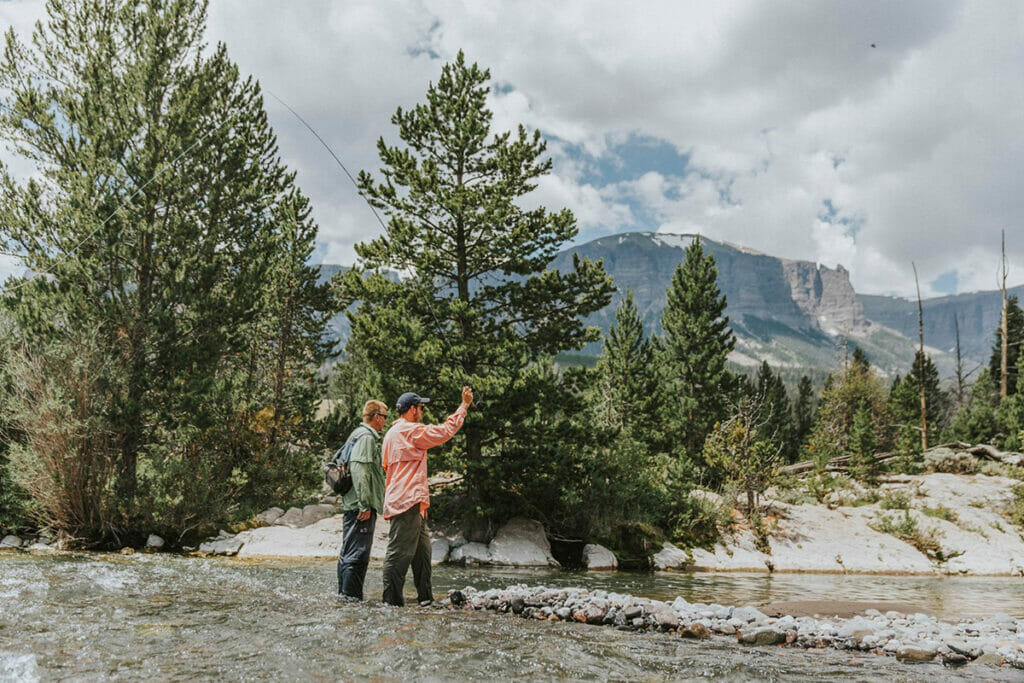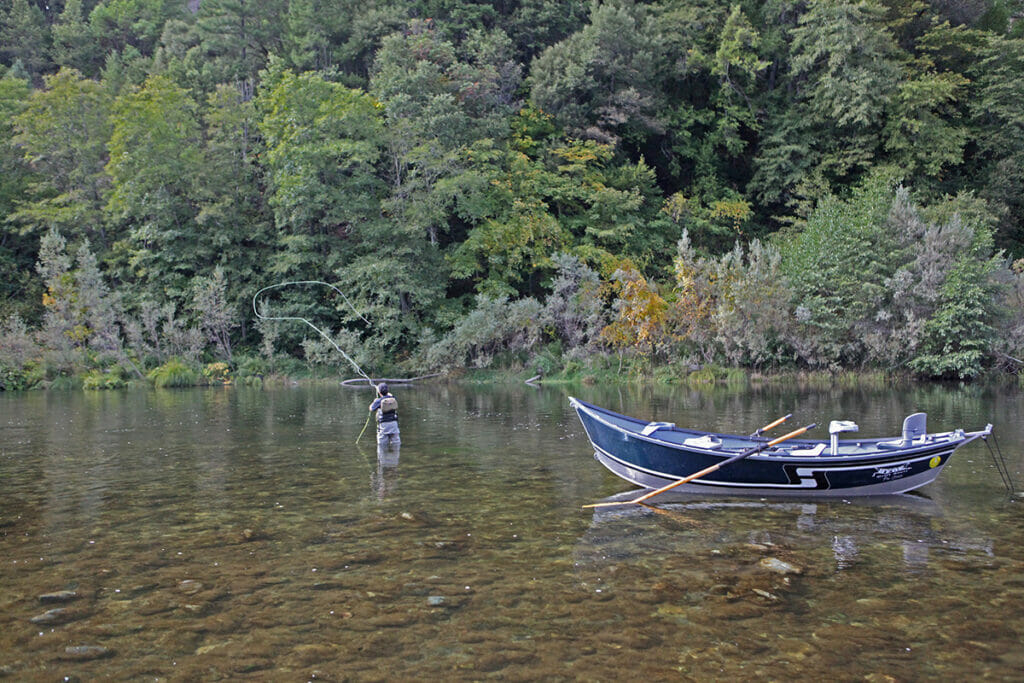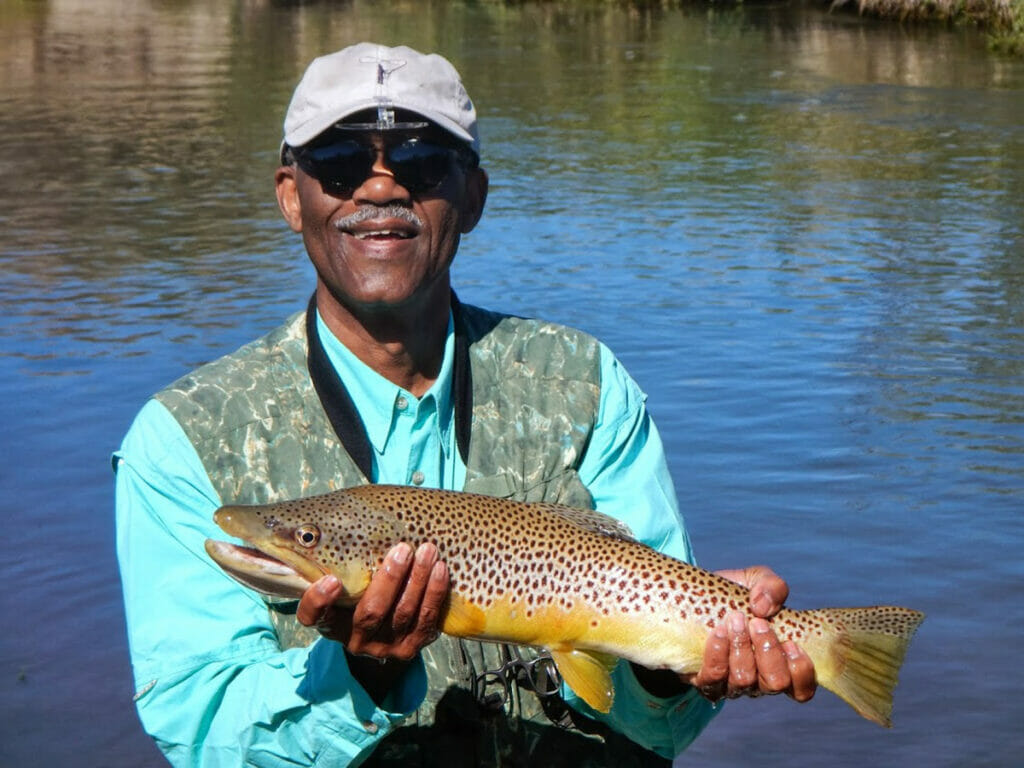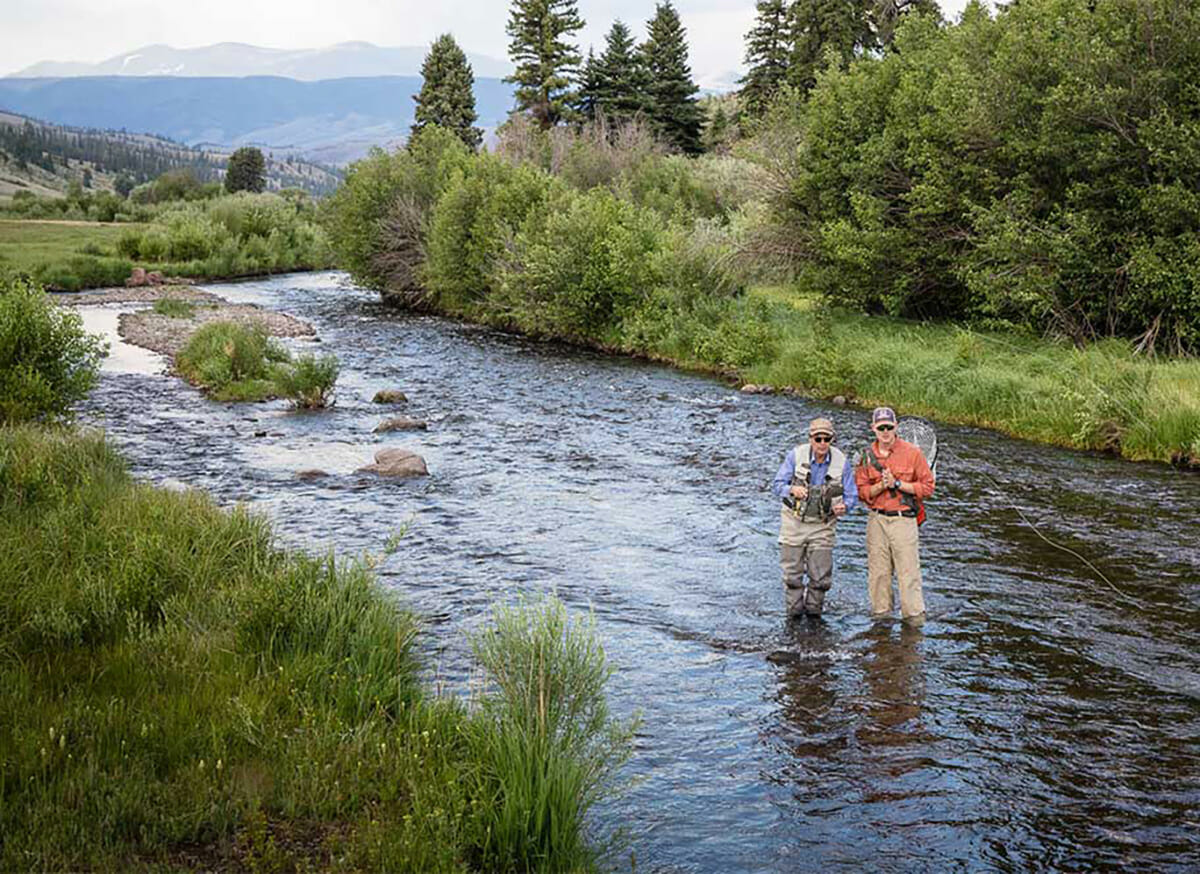Questions for Bryce Albright, executive director of the National Dude Ranchers’ Association
Editor’s Note: Trout Unlimited is inviting people from across the Colorado River Basin—ranchers, guides, elected officials, businesses, athletes, tourism officials—to talk with us about the West’s historic drought and how we can work together to meet the challenge of a world with less water.
If you’ve seen an episode of Yellowstone or are still clinging to your VHS copy of City Slickers, you are aware of the concept of dude ranches—an all-inclusive vacation destination revolving around outdoor activities such as horseback riding, fly-fishing, rafting, and other mainstays of the Western way of life.
Hollywood would suggest that at the dude ranch, you’re liable to be branded, or go home with a pet calf.
But we spoke with Bryce Albright, executive director of the National Dude Ranchers’ Association (NDRA), to get the straight story about these often-multigenerational family businesses that introduce their guests to America’s Western heritage and cowboy culture. We learned that they face a combination of economic and social challenges—volatile insurance premiums, rampant wildfires, historic drought—that are forcing historic names out of the industry altogether.

The NDRA has been the governing body of guest ranches west of the Mississippi River for nearly 100 years, and Albright is working to meet the challenges faced by the organization’s 90 member ranches, as well as capitalize on the recent renaissance of Western storytelling on TV and in the theatres.
NG: First things first, how do dude ranches relate to fly-fishing?

BA: While dude ranches offer a lot of different outdoor adventures and activities, many of our guests come to simply experience the best fishing waters in our country, with some ranches even offering niche guiding experiences to pursue unique species of trout on pristine and award-winning public and private waters.
And when you start digging into the activities our guests want to pursue, the second most common is usually fly-fishing, as many guests have never experienced these activities and can learn firsthand from a family who has fished those waters for generations or a guide who can truly help ensure a memorable vacation.
NG: With such a focus on fishing for your guests, I imagine there must also be a strong commitment to conservation by your members?
BA: Absolutely. While all our members have guest ranching operations, many also still continue to have agricultural interests as well. In order to really preserve the Western way of life—which is our association’s main focus—there is a natural inclination to be involved in conservation efforts to ensure the preservation of these lands, waters, fisheries, and properties.
NG: To that conservation point, what type of on-the-ground context can you offer TU members across the country who may not have experience with the challenges presented by the drought, wildfires, and our increasingly drier climate?
BA: In Colorado, for example, we have about 20 member ranches who have consistently been voicing their concerns about the drought. Some have been forced to limit their fly-fishing offerings because of the impacts of the drought on their local waterways and others haven’t even been able to offer angling activities at all for a couple years due to wildfires. It’s also causing some of our members to stock more fish in an effort to provide a more controlled environment to continue to provide the experiences our guests want. We also have to be careful with our horses in the sustained heat and make sure our animals are healthy and being treated respectfully.
NG: Beyond these anecdotal impacts, what are some of the unforeseen financial challenges caused by the drought and climate?
BA: There are a few examples that come to mind. Our Colorado ranches have had to pay increasingly higher water costs to irrigations districts over the past few years, which naturally increases the cost to grow hay, and in turn raises the cost to feed the horses or cattle and make these ranches run.

Insurance premiums have also gone through the roof. Our members across the Southwest have seen their premiums increase about 30-150 percent—on top of inflationary pressures—based on their insurance company’s wildfire score for a region. When your property is an idyllic setting of ponderosa pines, they’re not sure if that want to take on that risk. This has become a huge issue for us to combat and navigate over the past year, because many ranches just simply can’t afford these costs.
Unfortunately, these are just part of the day-to-day challenges our members are now experiencing.
NG: With so many challenges facing your members, have you also been seeing examples of that Western grit and ingenuity to adapt to these new realities?
BA: Yes, we have a number of ranches in Colorado and Arizona who have been taking initiative to solve some of these problems. One of the solutions they have come up with is starting a fodder program, which is essentially growing barley in very controlled environment like a shipping container.
Although there is a high initial investment to create these habitats, a fodder program can create nutrient dense food in as little as a week to supplement hay or grain for horses and livestock. This has helped with the rising water costs and enabled these ranches to sustain larger herds.

We’ve also had ranches increase their water conservation efforts, working with their state governments or applying for grants to better their ponds, rivers, and streams and mitigate flooding and drainage issues on their properties.
NG: What does the drought mean for the future of this industry, the West, and our national connection to cowboy culture?
BA: We’re already seeing a major change in states like Texas, Montana, Arizona, and New Mexico, where agriculture production has plummeted. You’re seeing these longtime, generational ranches selling off cattle left and right because they can’t afford to pay for water, simply don’t have enough water, or can no longer afford the costs associated with it.
Drought is just a very scary, uncontrollable factor that both the agriculture and tourism worlds have to pay attention to in the coming years. We’re seeing these institutions and industries that the West was built on going away and it’s very intimidating.
NG: If these ranches are closing or selling off their properties, are these people changing careers or moving to a more hospitable area for their way of life?
BA: A little of both. You’re seeing retirements coming into play but also some of the largest beef producers in the world having to sell. Unfortunately, everyone bought high and now they’re having to sell very, very low. Others are downsizing to a smaller scale or people leaving the only thing they have ever known to try something totally different to make a living.
NG: What can TU members do to support dude ranches?
BA: There were some promising developments that happened over the pandemic because of the supply chain challenges our larger beef producers experienced. In Wyoming, for example, they passed laws allowing for smaller beef producers to sell their products directly to consumers, benefitting these ranches directly and providing a new avenue for people to learn about Western heritage. There’s a company outside of Cody called “Beef Box,” which processes their grass-fed angus beef and ships it across the country.
TU members can also explore the National Dude Ranchers’ Association website to learn more about the opportunities dude ranches offer and how their vacations can benefit families trying to preserve this way of life for generations to come.



